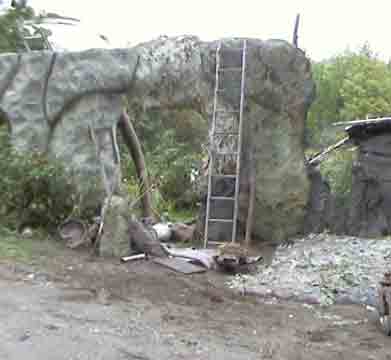
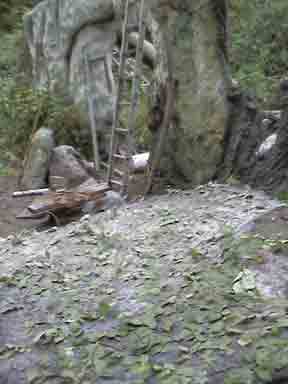
.

Pictures of tilt-up and lift-into-place wall panel experimentation. Organically styled walls and panels are very easily formed on the ground or a bench. After curing for some days, the panel or wall section can be tilted or lifted into place, (given summer temperatures). Ordinary cement mixes were used here. Small stone were lightly used, though most ranged around a quarter inch in size (half cm). The panel thicknesses were generally around 3/4 inches in thickness, (with some ribbing added around the seams).
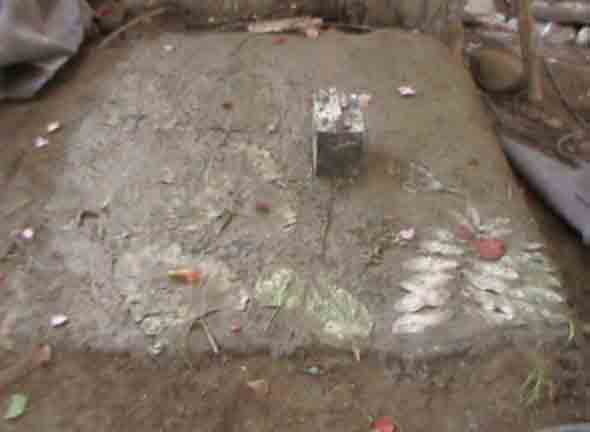
For textural effect, various leaves were pressed into the finished surface. For speed, one can actually dump an armful of leaves onto a new cement surface and press them in randomly. A weight was used in the picture above to enhance details of a pressed plant (an '07 fossil).

To begin with, the ground is well smoothed first and a very thin coat of cement is spread out. Next, wires are spread over the fresh cement. The picture above shows a cordless drill used to "un-reel" the wire onto the cement. A better tool was finally made and shown further below.
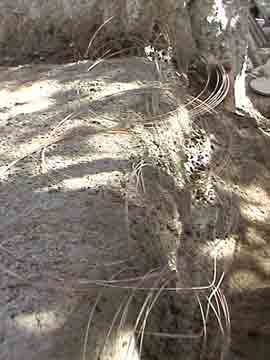
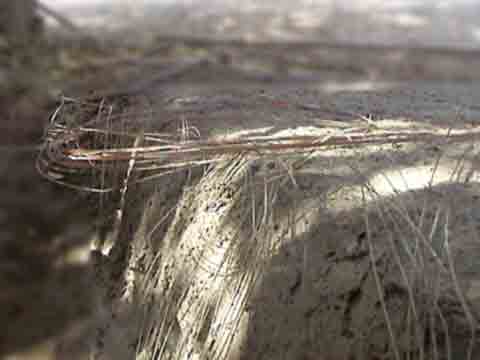
Above is a panel being formed on the ground. The dirt-mold was curved to form a rounded corner in the wall. After the initial, thin layer of cement was spread over the ground, coils of rings are spread out. The above pictures show that the rings are easily bent around the corner and secured in place by wet cement.
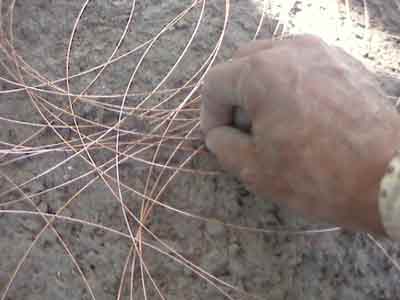
Cement application was done by gloved hand, (which i prefer over toweling). Costly tools would be nice but hand labor is enjoyable too, if we can live in the moment. Re-positioning the rings on the freshly poured cement is easier with bare hands.
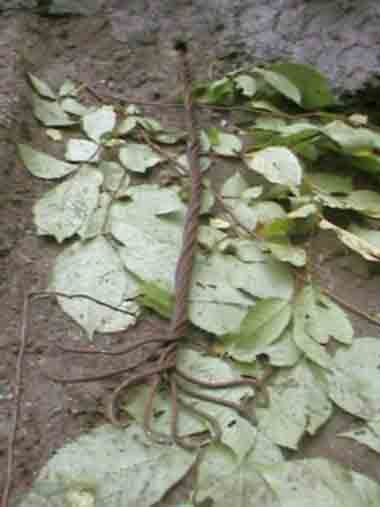
The above picture indicates that leaves were spread on ground-mold before spreading the first layer cement. Much more care is needed as these leaves tend to embed too deeply in the cement. (Much more than they would embed on top of the molded cement). Also of note is some pre-formed #9 bare wire. The splayed ends anchor in the panel yet to be formed. The other end has been poked into a hole in the simple wall footing. Twisted wire like this or even scraps of heavy cable can be used this way. Spreading out the end will better distribute the lifting stress. I failed to take more pictures of the top of panels. I used just several pieces of #9 wire anchored in the panel top. These lifting wires were then simply tied to A lifting beam.
A rear-wheel sprocket from a junked bicycle was used to make a "ring dispenser". I finally took time to make it with a handle welded to the the gear teeth and an appropriately sized piece of tubing to hold the reels of welding wire.

Above, the method for securing the reel to the dispenser is shown. Note the slits in the tubing or shaft. The slits were made with a chop-saw which has an abrasive blade. The slits are just sized to receive a simple wire clip, which secures the reel. The sprocket allows turning the reel slowly while moving over fresh cement. The rings drop off easily but a second person is best, to secure the loose flat-coils in the fresh cement.
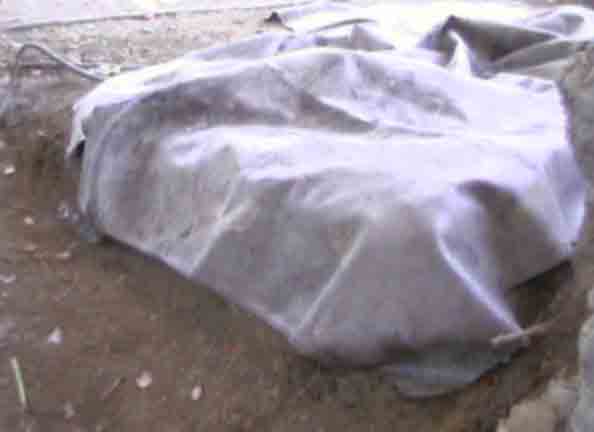
Rubber roofing makes a good cover that won't blow away. Covering fresh cement retains moisture needed for curing. Curing is not drying!
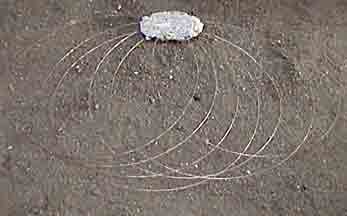
One more concept for ring making is to bind together some flat coiled rings and bind them with a "cement cookie". Later this assembly can be used for fast ferrocement construction
. 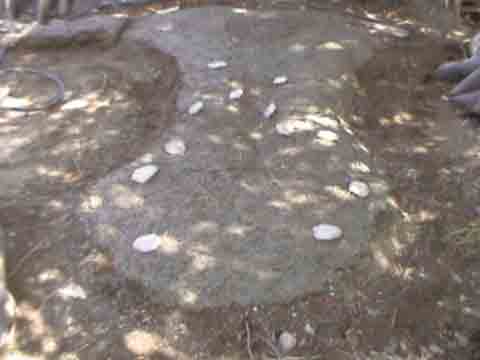
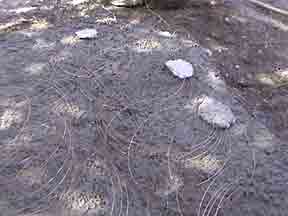
Ring "cookies" can be used intermittently and interchangeably with other rings. The cookie format could used another material like recycled, melted plastic, for instance.

As little as several days in the summer heat can harden the cement enough for raising the panel into place. Engineering tends to demand 30 day cures, although today's cement seems to have been modified for speed curing. (Some experts argue this reduces cement-durability through increased permeability). In Maine, they call this Type I_II which has all but replaced Type I (and must be distinguished from Type III, (no space). They might as well of called it Type X or any other term rather than "I-space- II". (More cement ranting here).
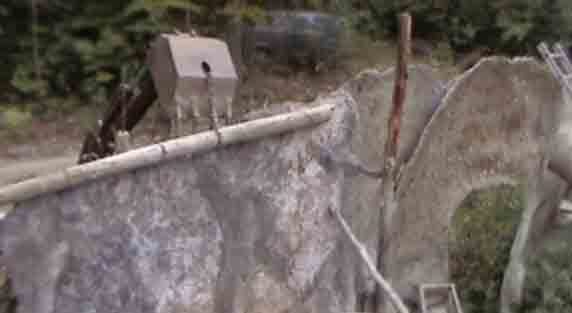
Large panels benefit with a suitable lifting beam. I tend to use small tree trunks or poles, (which conserve on cash). Immediately after lifting, i jamb a vertical pole under the machine's bucket, (My hydraulics are weaker than new,standard tractor equipment.)
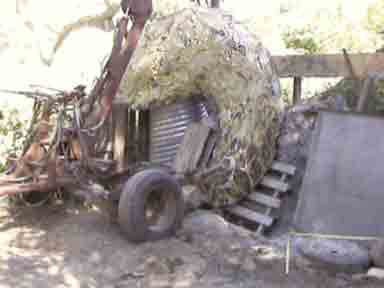
More on my sand-casting methods (or soil-molding of concrete) can be found here.
Note: These pages are placed in the public domain and are furnished "as is". The author assumes no responsibility for the use or misuse of the concepts in this series. All authorities should be satisfied first, as might be required, by relevant laws, before any building proceeds.
Searching Synergy ....  .... Free Exchange of Ideas
.... Free Exchange of Ideas
Email comments welcome ~~~~~~~ boa1@pivot.net
Tel : 207 342 5796 . . . (Maine)